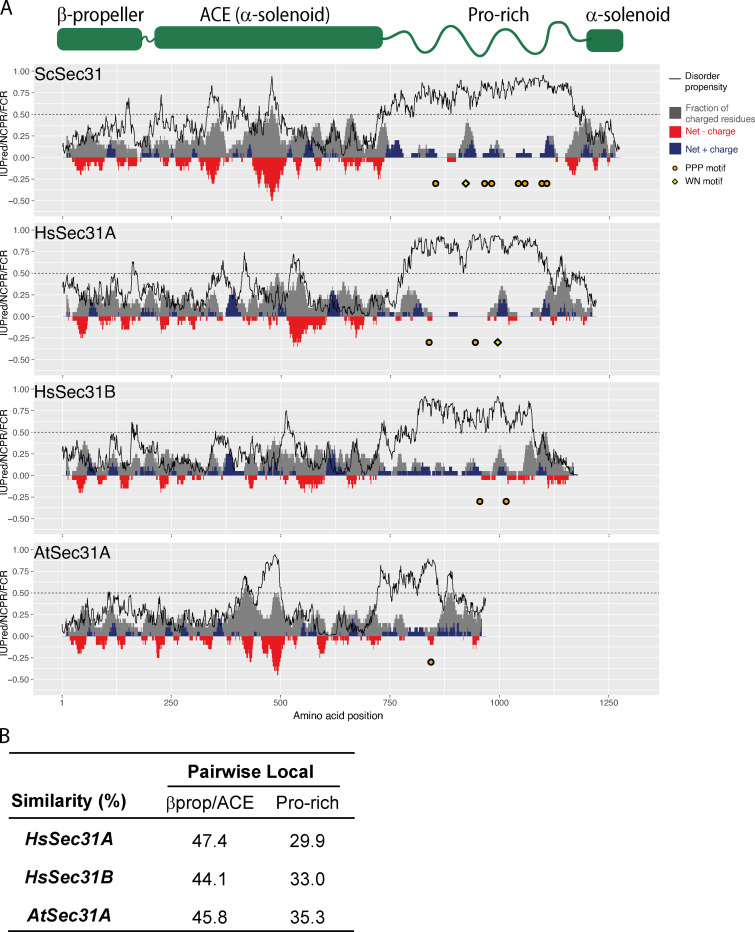Figure S3.
Sec31 disordered domains share several features across species. (A) Charge-disorder plots for Sec31 orthologues from S. cerevisiae (ScSec31), human (HsSec31A and HsSec31B), and A. thaliana (AtSec31A). The black curve indicates predicted disorder propensity as calculated by IUPred. A value of IUPred >0.5 (dashed line) suggests a strong propensity for being intrinsically disordered. Each gray bar corresponds to fraction of charged residues (FCR) in a sliding window of 20 amino acids, centered on the residue indicated. Red/blue bars at each position correspond to net charge per residue (NCPR) in a sliding window of 20 amino acids. PPP motifs are indicated by orange circles, and WN motifs are indicated by yellow diamonds. (B) Local pairwise sequence similarity between the ScSec31 structural domain (βprop/ACE) and disordered regions (Pro-rich) and corresponding domains in orthologues. None of the orthologues share significant similarity to ScSec31 within their disordered regions, whereas the structured regions have higher homology.

